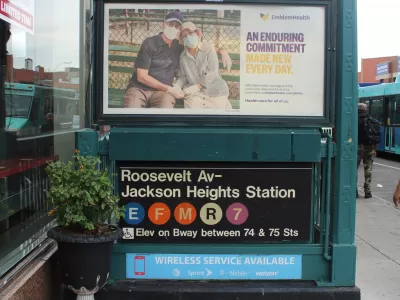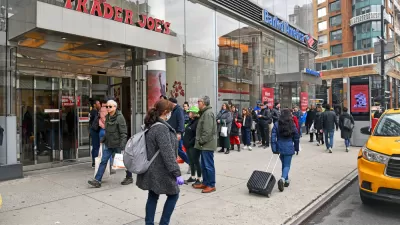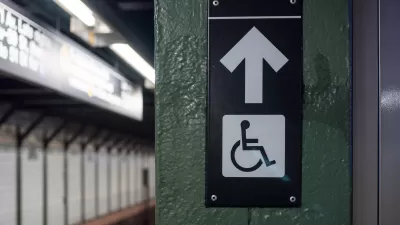Using zoning codes to improve accessibility to public transit facilities is a new, but well overdue, idea.

The challenge of retrofitting contemporary standards of access for people with disabilities on a subway system well over a century old has long troubled New York City. Now there's a new tool in effort that's about as old as the subway: zoning.
"Mayor Bill de Blasio, the New York City Council and the Metropolitan Transportation Authority (MTA) have announced the approval of Elevate Transit: Zoning for Accessibility, a collaboration between the MTA, City Council, the Department of City Planning (DCP) and the Mayor’s Office for People with Disabilities (MOPD) to boost New York City’s push to make its transit system fully accessible," according to an article published by the Intelligent Transport website.
"The initiative will allow the MTA to leverage planned private development to achieve a fully accessible transit system faster, while saving taxpayer dollars as the MTA faces financial challenges caused by the ongoing pandemic."
Elevate Transit both creates new zoning tools and strengthens existing zoning tools to incorporate public transit accessibility into private real estate developments. The MTA committed to spending $600 million on accessibility in 2018, eventually raising that number to a total $5 billion investment for accessibility improvements on the subway, the Long Island Rail Road, Metro-North Railroad, and the Staten Island Railway as part of its 2020 – 2024 Capital Program.
As for more specifics, the article includes the following:
- "This provision requires developers of most mid- or high-density sites adjacent to subway, Staten Island Railway, Long Island Rail Road and Metro-North Railroad stations within New York City to consult with the MTA first to determine whether the MTA needs an easement (permanent access to a small piece of property) for future accessibility projects at the adjacent station."
- "This provision expands the existing ‘transit improvement bonus’ from central business districts to other high-density areas in the city. This programme incentivises private developers to directly fund and build new transit station access improvements, such as elevators or other circulation improvements at already accessible stations, in exchange for a floor area bonus of up to 20 per cent."
FULL STORY: NEWS NYC’s Elevate Transit: Zoning for Accessibility initiative receives approval

Maui's Vacation Rental Debate Turns Ugly
Verbal attacks, misinformation campaigns and fistfights plague a high-stakes debate to convert thousands of vacation rentals into long-term housing.

Planetizen Federal Action Tracker
A weekly monitor of how Trump’s orders and actions are impacting planners and planning in America.

In Urban Planning, AI Prompting Could be the New Design Thinking
Creativity has long been key to great urban design. What if we see AI as our new creative partner?

King County Supportive Housing Program Offers Hope for Unhoused Residents
The county is taking a ‘Housing First’ approach that prioritizes getting people into housing, then offering wraparound supportive services.

Researchers Use AI to Get Clearer Picture of US Housing
Analysts are using artificial intelligence to supercharge their research by allowing them to comb through data faster. Though these AI tools can be error prone, they save time and housing researchers are optimistic about the future.

Making Shared Micromobility More Inclusive
Cities and shared mobility system operators can do more to include people with disabilities in planning and operations, per a new report.
Urban Design for Planners 1: Software Tools
This six-course series explores essential urban design concepts using open source software and equips planners with the tools they need to participate fully in the urban design process.
Planning for Universal Design
Learn the tools for implementing Universal Design in planning regulations.
planning NEXT
Appalachian Highlands Housing Partners
Mpact (founded as Rail~Volution)
City of Camden Redevelopment Agency
City of Astoria
City of Portland
City of Laramie





























